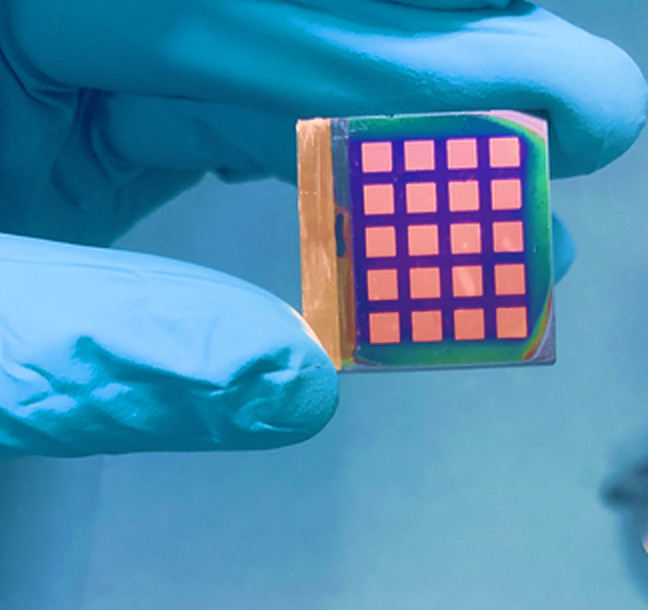Researchers at Shaanxi Normal University in China have developed an organic-inorganic hybrid perovskite solar cell that uses 2D perovskite crystal as the template for 3D perovskite growth.
Perovskite cells built with 2D hybrid materials are generally more stable than conventional, 3D devices, due to the protection provided by the organic ligands. They usually exhibit large exciton binding energies.
“This work has achieved the orientation control of polycrystalline perovskite thin films for the first time, and prepared the high-quality perovskite thin films and high-efficiency devices with orientation,” researcher Zhike Liu told pv magazine.
The academics built the cell with a 2D/3D heterojunction architecture. The device features a substrate made of tin oxide (FTO), a titanium oxide (TiO2) electron transport layer, a perovskite layer deposited on diaminobenzidine (DAB) film via spin coating, a spiro-OMeTAD hole transport layer, and a metal contact.
The researchers said the DAB film can modify the morphology of the perovskite films.
“DAB modification on the bottom and top surfaces of the perovskite film can significantly passivate and reduce defects, thus reducing nonradiative recombination loss in the perovskite film,” they explained.
The solar cell has a power conversion efficiency of 24.83%, an open-circuit voltage of 1.19 V, a short-circuit current of 25.21 mA cm−2, and a fill factor of 82.61%.
“The unencapsulated devices maintain 95% and 89% of their initial efficiency after storing in ambient air for 1,650 hours or heating at 85 C for 500 hours, respectively, and the encapsulated device sustains 88% of its initial PCE after MPP tracking for 200 h under continuous illumination,” said the Chinese group.
They presented the cell in “Orientation Engineering via 2D Seeding for Stable 24.83% Efficiency Perovskite Solar Cells,” which was recently published in Advanced Energy Materials.
“This article has a good reference value for controlling other orientations of perovskite and promoting the commercialization process of high-efficiency perovskite cells,” said Liu.
This content is protected by copyright and may not be reused. If you want to cooperate with us and would like to reuse some of our content, please contact: editors@pv-magazine.com.




By submitting this form you agree to pv magazine using your data for the purposes of publishing your comment.
Your personal data will only be disclosed or otherwise transmitted to third parties for the purposes of spam filtering or if this is necessary for technical maintenance of the website. Any other transfer to third parties will not take place unless this is justified on the basis of applicable data protection regulations or if pv magazine is legally obliged to do so.
You may revoke this consent at any time with effect for the future, in which case your personal data will be deleted immediately. Otherwise, your data will be deleted if pv magazine has processed your request or the purpose of data storage is fulfilled.
Further information on data privacy can be found in our Data Protection Policy.